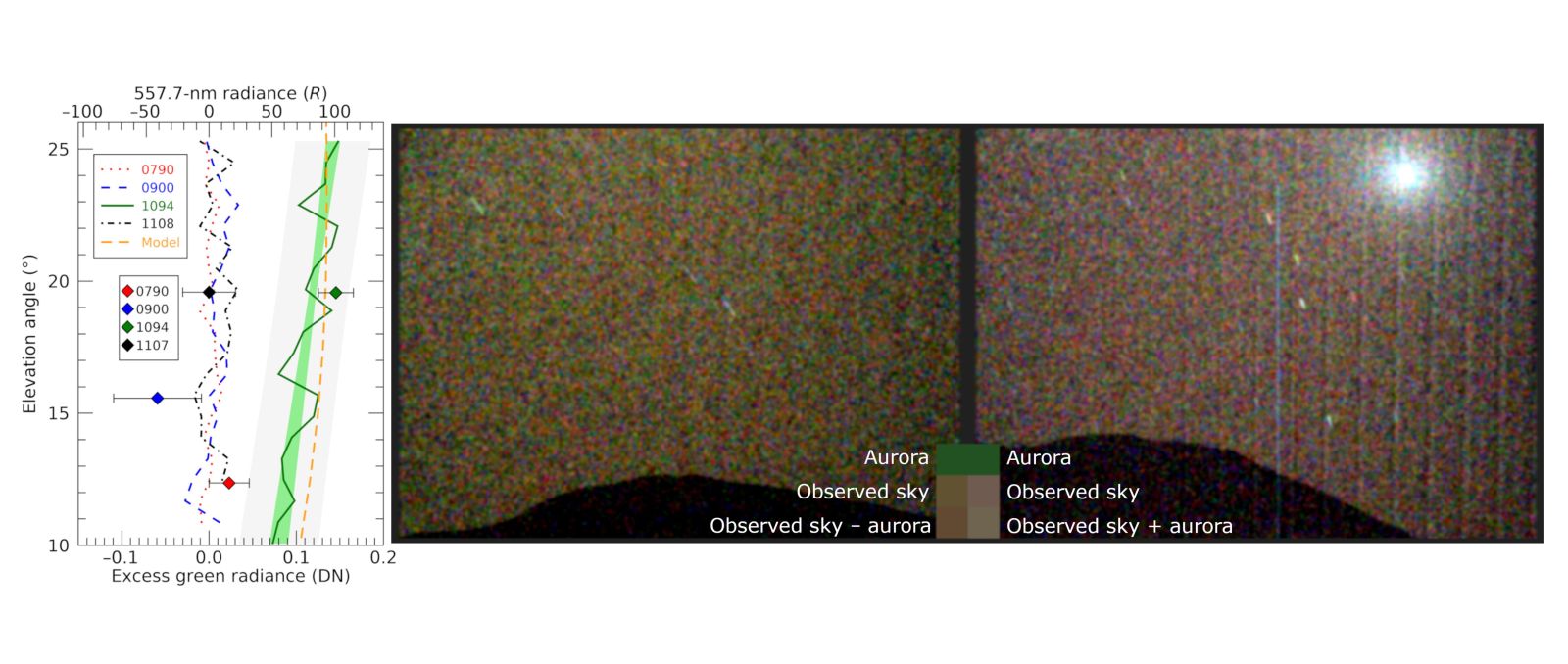First observation of auroras from the Martian surface 🟠
Published by Cédric,
Article author: Cédric DEPOND
Source: Science Advances
Other Languages: FR, DE, ES, PT
Article author: Cédric DEPOND
Source: Science Advances
Other Languages: FR, DE, ES, PT
Follow us on Google News (click on ☆)
This discovery marks a major breakthrough in understanding the interactions between the Sun and planetary atmospheres. Thanks to coordination between space missions, scientists were able to immortalize this fleeting luminous spectacle.
A unique Martian phenomenon
Unlike Earth, Mars no longer has a global magnetic field, which profoundly alters the nature of its auroras. Solar particles directly bombard the thin atmosphere, creating diffuse glows across the entire planet.
The event of March 22, 2024, was triggered by an exceptionally intense coronal mass ejection. The rover's instruments recorded a characteristic green emission, similar to that observed on our planet.

Evidence of excess green signal in the Martian sky on March 18.
Left: profiles of the excess green signal for the four aurora detection attempts. Only sol 1094 (green line) shows a positive detection. The curves correspond to Mastcam-Z measurements and the model, while the diamonds represent SuperCam data.
Center: image of the Martian sky with aurora (sol 1094).
Right: reference image without aurora. Both images underwent the same processing (reduction of Phobos' light, Gaussian smoothing, same color stretch).
Three squares illustrate different signal levels in the images:
– Top: aurora signal at 557.7 nm without other light,
– Middle: average signal observed after removing Phobos' light,
– Bottom: corrected average signal (removal of excess green for the image with aurora, addition for the image without aurora) showing how the sky would have appeared without aurora (left) or with it (right).
The shaded areas indicate instrumental and processing uncertainties. The dotted orange line represents a radiative transfer model fitted to SuperCam measurements for sol 1094.
This observation confirms theoretical models developed over years. The collected data paves the way for new research on the physics of extraterrestrial atmospheres.
A fruitful scientific collaboration
The alert issued by orbiting satellites allowed ground observations to be prepared. Several international teams joined forces to seize this unique opportunity.
The rover's Mastcam-Z and SuperCam instruments were precisely aimed at the Martian night sky. Their measurements perfectly align with those from the MAVEN and Mars Express orbiters.
This success demonstrates the importance of coordinated missions in space exploration. It also foreshadows the observations that the first astronauts on Mars will be able to make.